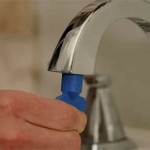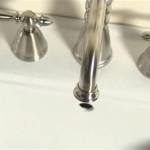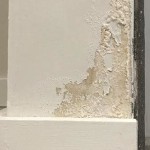How To Clean a Stinky Bathroom Sink Drain
A stinky bathroom sink drain is a common household problem. The unpleasant odor can permeate the entire bathroom, making it an unwelcoming space. The source of the smell is typically a buildup of organic matter, hair, soap scum, and other debris that accumulates within the drainpipe over time. Bacteria thrive in this environment, decomposing the material and releasing foul-smelling gases like hydrogen sulfide. Regular cleaning can prevent this buildup and eliminate the associated odor. This article will discuss several effective methods for cleaning a stinky bathroom sink drain.
Identifying the Cause of the Stink
Before embarking on a cleaning regimen, it is helpful to understand the likely cause of the unpleasant odor. As previously mentioned, the primary culprit is decaying organic matter. Hair is a significant contributor, as it readily binds with soap scum and other debris to form a solid mass. Shaving cream residues, toothpaste, and dead skin cells also contribute to the buildup. The design of the drainpipe itself can exacerbate the problem. The P-trap, the curved section of pipe under the sink, is designed to hold water, creating a barrier that prevents sewer gases from entering the bathroom. However, this water also traps debris, allowing it to accumulate and decompose. Infrequent use of the sink can also contribute to the problem. When water is not regularly flushed through the drain, the debris remains stagnant, fostering bacterial growth and intensifying the odor.
In some cases, the source of the odor may not be the drain itself but rather a problem within the plumbing system. A clogged vent pipe can prevent proper airflow, causing sewer gases to be forced back up through the drain. While this is less common, it is a possibility that should be considered if cleaning the drain does not resolve the issue. Similarly, a dry P-trap, caused by evaporation from infrequent use or a leak, can allow sewer gases to escape. Identifying the root cause of the stink is crucial for selecting the most effective cleaning method.
Effective Cleaning Methods
Several methods can be employed to clean a stinky bathroom sink drain, ranging from simple home remedies to more intensive cleaning procedures. The choice of method will depend on the severity of the clog and the individual's preference. It is generally advisable to start with the least aggressive method and progress to more potent solutions if necessary. Safety precautions should be observed when handling any cleaning agents, including wearing gloves and eye protection.
Hot Water Flush: This is the simplest and often the first method to try. Running hot water down the drain for several minutes can help dislodge loose debris and flush away accumulated grime. For best results, use the hottest water available from the tap. While this method may not eliminate stubborn clogs, it can effectively remove minor buildup and freshen the drain.
Baking Soda and Vinegar: This is a classic and environmentally friendly cleaning solution. Pour approximately one cup of baking soda down the drain, followed by one cup of white vinegar. The mixture will fizz and bubble as the baking soda reacts with the vinegar. Allow the mixture to sit in the drain for at least 30 minutes, or preferably overnight. The fizzing action helps to loosen debris and break down greasy residue. After the soaking period, flush the drain with hot water. This method is effective for mild to moderate clogs and can be used regularly to prevent buildup.
Baking Soda, Salt, and Boiling Water: This method combines the abrasive properties of salt with the cleaning power of baking soda and hot water. Mix together one cup of baking soda and one-half cup of salt. Pour the mixture down the drain, followed by a kettle of boiling water. Allow the mixture to sit for several hours or overnight before flushing with hot water. The salt helps to scour the drainpipe, while the baking soda neutralizes odors and the boiling water melts away grease. Exercise caution when using boiling water, as it can damage certain types of pipes and cause burns if not handled carefully.
Dish Soap and Hot Water: This method is particularly effective for dissolving greasy buildup. Pour a generous amount of dish soap down the drain, followed by a kettle of hot water. The dish soap acts as a degreaser, breaking down the greasy residue that accumulates in the drainpipe. Allow the mixture to sit for a few minutes before flushing with hot water. This method can be used as a preventative measure to keep the drain clean and free of grease.
Enzyme Drain Cleaner: Enzyme drain cleaners contain natural enzymes that break down organic matter. These cleaners are generally safe for all types of pipes and are environmentally friendly. Follow the instructions on the product label, as application methods vary. Typically, the cleaner is poured down the drain and allowed to sit overnight. The enzymes work to digest the organic material, eliminating the source of the odor. Enzyme drain cleaners are particularly effective for drains that are prone to clogs caused by hair and grease.
More Intensive Cleaning Procedures
If the above methods fail to eliminate the stink, more intensive cleaning procedures may be necessary. These procedures involve physically removing the clog or using stronger chemical drain cleaners. It is important to exercise caution when using these methods, as they can potentially damage the pipes or pose health risks if not handled properly.
Plunger: A plunger can be used to dislodge clogs that are located close to the drain opening. Fill the sink with enough water to cover the cup of the plunger. Place the plunger over the drain opening and create a tight seal. Push and pull the plunger repeatedly, using a forceful, rhythmic motion. The pressure created by the plunger can help to break up the clog and force it through the drainpipe. Remove the plunger and check if the water drains freely. Repeat the process if necessary. A flange plunger is often required for bathroom sinks, designed to allow a better seal over the drain opening.
Drain Snake (Auger): A drain snake, also known as an auger, is a flexible tool that can be inserted into the drainpipe to break up or retrieve clogs. Insert the drain snake into the drain opening and carefully feed it down the pipe. Rotate the handle of the drain snake to advance it through the clog. If you encounter resistance, continue rotating the handle to break up the clog. Once the drain snake has passed through the clog, retract it slowly, removing any debris that is attached to the end. Flush the drain with hot water to remove any remaining debris. Drain snakes are available in various lengths and sizes, allowing access to different parts of the drain system. Some drain snakes are motorized, making it easier to navigate through complex pipe configurations.
Removing and Cleaning the P-Trap: This method involves physically removing the P-trap, the curved section of pipe under the sink, and cleaning it out. Place a bucket under the P-trap to catch any water that may spill out. Loosen the slip nuts that connect the P-trap to the drainpipe and the tailpiece. Carefully remove the P-trap and empty its contents into the bucket. Clean the P-trap thoroughly with a brush and soap and water, removing any accumulated debris. Inspect the P-trap for any signs of damage or corrosion. Reassemble the P-trap, ensuring that the slip nuts are tightened securely. Run water down the drain to check for leaks. This method can be very effective for removing stubborn clogs that are trapped within the P-trap.
Chemical Drain Cleaner: Chemical drain cleaners are a last resort and should be used with extreme caution. These cleaners contain harsh chemicals that can dissolve clogs but can also damage the pipes and pose health risks. Always wear gloves and eye protection when using chemical drain cleaners. Follow the instructions on the product label carefully. Pour the cleaner down the drain and allow it to sit for the recommended time. Flush the drain with plenty of water. Avoid using chemical drain cleaners excessively, as they can corrode pipes and create more problems in the long run. Consider the environmental impact as well, as these chemicals can be harmful to the ecosystem. If a chemical drain cleaner does not resolve the issue, it is advisable to contact a professional plumber.
Preventative Measures
Preventing clogs and odors is always preferable to having to clean a stinky bathroom sink drain. Several simple preventative measures can be taken to minimize the buildup of debris and keep the drain clean and fresh. Regular maintenance is key to preventing future problems.
Use a Drain Stopper or Screen: A drain stopper or screen can prevent hair and other large debris from entering the drainpipe. Choose a drain stopper or screen that fits snugly into the drain opening and effectively catches debris. Clean the drain stopper or screen regularly to remove any accumulated material.
Flush Regularly with Hot Water: Running hot water down the drain for a few minutes each week can help to flush away loose debris and prevent buildup. This is particularly important if the sink is not used frequently.
Avoid Pouring Grease Down the Drain: Grease solidifies as it cools, causing clogs in the drainpipe. Dispose of grease in the trash or save it in a container for recycling.
Regular Cleaning with Baking Soda and Vinegar: Performing a monthly cleaning with baking soda and vinegar can help to prevent the buildup of debris and neutralize odors. This is a simple and effective way to maintain a clean and fresh-smelling drain.
Professional Plumbing Maintenance: Schedule regular plumbing maintenance with a qualified plumber. A plumber can inspect the drain system for any potential problems and perform preventative maintenance to keep the drains clean and functioning properly. Regular maintenance can help to prevent costly repairs in the future.
By understanding the causes of a stinky bathroom sink drain and implementing effective cleaning methods and preventative measures, individuals can maintain a clean and odor-free bathroom. Regular maintenance and prompt attention to any signs of clogging or odors can prevent minor issues from escalating into more significant problems.

How To Clean A Stinky Sink Drain By Home Repair Tutor

How Can I Help A Stinky Bathroom Sink Drain Cleaning More
:max_bytes(150000):strip_icc()/__opt__aboutcom__coeus__resources__content_migration__mnn__images__2018__08__sink_drain-351af8e441034f319fe07f00c091d8b6.jpg?strip=all)
How To Clean A Smelly Drain Naturally

How To Clean A Smelly Sink

How To Clean Stinky Drains Liquid Plumr

How To Clean A Stinky Sink Drain Home Repair Tutor

Why Your Drain Smells And How To Fix It Fast

How To Clean A Stinky Sink Drain Home Repair Tutor Bathroom Smelly

How To Clean Stinky Drains Liquid Plumr

Prevent Drain Smells Deodorize Your Drains
Related Posts







